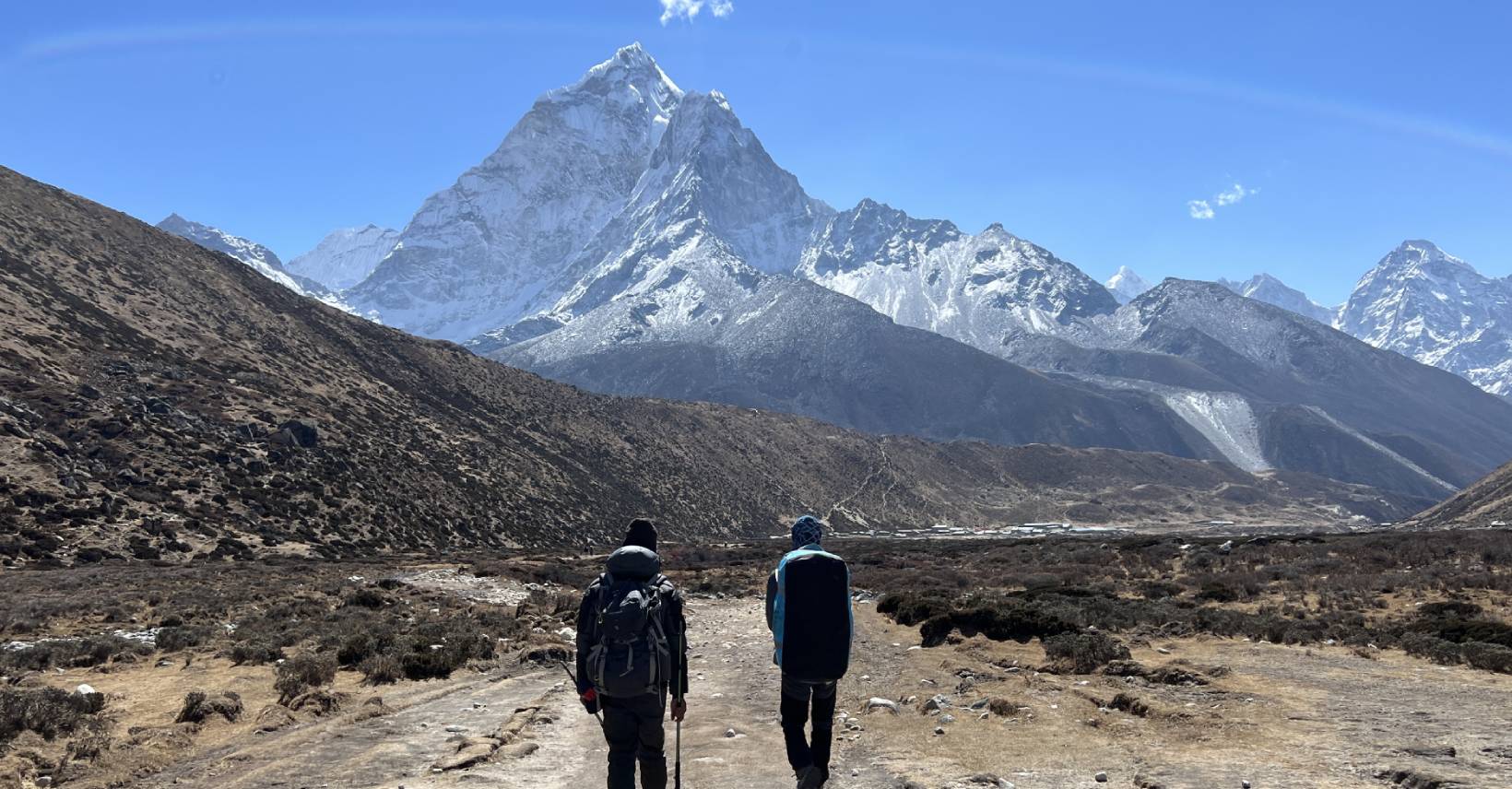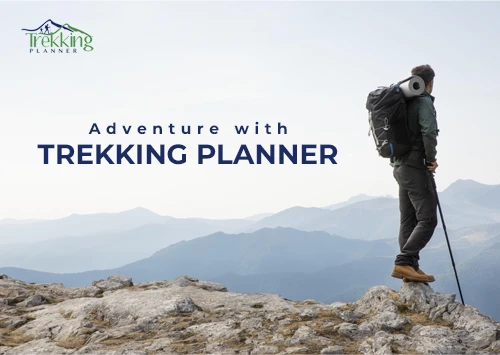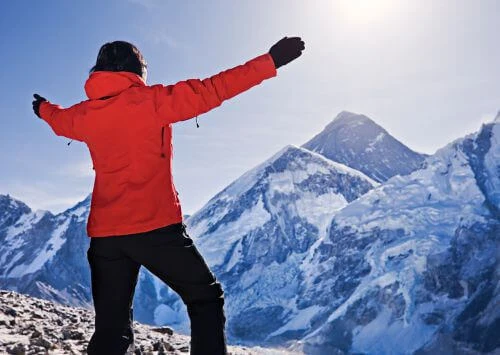Let’s see the insights prepared by Trekking Planner Nepal.
Nepal's treks are a paradise for adventure enthusiasts, attracting millions of visitors every year. But behind every successful trek lies a team of unsung heroes: the guides and porters. These brave men and women risk their lives to make trekkers' dreams come true. They navigate through treacherous trails, carry heavy loads, and provide vital support to trekkers. However, their contribution often goes unnoticed, and their challenges and struggles remain unheard.
In this article, we will bring to light the insights of Nepal's bravest guides and porters, who share their stories of risking it all for trekkers. From surviving natural disasters to dealing with altitude sickness, they have seen it all. Their experiences will give you a glimpse of the sacrifices they make and the courage they embody. So, sit back, relax, and let us take you on a journey through the eyes of Nepal's Unsung Heroes.
The Role of Guides and Porters in Trekking.
Guides and porters are the backbone of trekking in Nepal. They play a crucial role in ensuring the safety and success of treks. Guides are experienced professionals who lead trekkers through the trails, provide information about the local culture and geography, and help trekkers with any issues that may arise. Porters, on the other hand, carry heavy loads of equipment, food, and supplies, making it possible for trekkers to enjoy their journey without the burden of heavy backpacks.
Guides and porters are an essential part of the trekking experience, and their contribution cannot be overstated. They make it possible for trekkers to explore remote areas, witness breathtaking landscapes, and experience the local culture firsthand. Without them, trekking in Nepal would not be possible.
The Risks and Sacrifices of Being a Guide or Porter.
Being a guide or porter in Nepal is not an easy job. It requires a great deal of physical and mental strength, endurance, and resilience. Guides and porters risk their lives every day to ensure the safety and comfort of trekkers. They face numerous challenges, including navigating through treacherous trails, carrying heavy loads, dealing with altitude sickness, and surviving natural disasters like avalanches and landslides.
In addition to the physical challenges, guides and porters also face social and economic challenges. They work in a highly competitive industry where wages are low and working conditions can be harsh. Many guides and porters come from remote areas with limited access to education and healthcare. They often leave their families behind for weeks or months at a time to work in the trekking industry.
Despite these challenges, guides and porters continue to work tirelessly to make trekkers' dreams come true. They embody the spirit of adventure, courage, and resilience that make trekking in Nepal such a unique and rewarding experience.
Stories from Nepal's Bravest Guides and Porters.
The stories of Nepal's bravest guides and porters are a testament to their courage and dedication. One such story is that of Pasang Lhamu Sherpa Akita, who became the first Nepali woman to  climb Mount Everest from the South Col in 1993. Pasang started her career as a porter and worked her way up to become a guide. She faced numerous challenges, including discrimination because of her gender, but she never gave up. Her determination and courage inspired many women to follow in her footsteps.
climb Mount Everest from the South Col in 1993. Pasang started her career as a porter and worked her way up to become a guide. She faced numerous challenges, including discrimination because of her gender, but she never gave up. Her determination and courage inspired many women to follow in her footsteps.
Another inspiring story is that of Avisek Thakuri Singh, who has done multiple treks throughout Nepal. Avi started his career as a porter and worked his way up to become an Guide. He is now a part of the board of the company and someone important who supports sustainable tourism. He has faced numerous challenges, including surviving the 2015 earthquake that devastated Nepal during the COVID-19 period. His resilience and determination have made him a role model for many young guides and porters.
These are just a few examples of the countless stories of Nepal's bravest guides and porters. Their experiences and insights give us a glimpse of the sacrifices they make and the courage they embody.
The Impact of Tourism on Local Communities and the Nepal Economy.
Tourism has a significant impact on local communities in Nepal. It provides jobs and income opportunities for many people, especially in remote areas where other economic opportunities are limited. However, tourism also has negative impacts, including environmental degradation, cultural erosion, and social inequality.
The trekking industry in Nepal has become increasingly commercialized in recent years, with many trekking companies focusing on profit rather than sustainability and responsible tourism. This has led to overcrowding on popular treks, environmental degradation, and the exploitation of guides and porters.
To address these issues, it is essential to promote responsible and sustainable trekking practices. This includes supporting local communities, minimizing environmental impacts, and ensuring fair wages and working conditions for guides and porters. By trekking responsibly, we can ensure that the benefits of tourism are shared equitably among all stakeholders.
Ways to support Nepali Guides and Porters.
There are several ways to support Nepali guides and porters. One way is to choose a trekking company that values responsible and sustainable tourism. Look for companies that pay fair wages to guides and porters, provide them with proper gear and equipment, and ensure their safety and well-being. Another way is to tip guides and porters generously. Tipping is the best way to show appreciation for their hard work and dedication.
You can also support local communities by buying local products and services, staying in locally owned lodges, and respecting local customs and traditions. By supporting local communities, we can ensure that the benefits of tourism are shared equitably among all stakeholders.
Responsible and Sustainable Trekking Practices.
Responsible and sustainable trekking practices are essential to ensuring the long-term viability of the trekking industry in Nepal. This includes minimizing environmental impacts by following the principles of Leave No Trace, supporting local communities, and ensuring the safety and well-being of guides and porters.

Responsible and Sustainable Trekking Practices from a Trekking Planner in Nepal.
When trekking, it is essential to minimize our impact on the environment by packing out all waste, avoiding single-use plastics, and staying on designated trails. We should also respect local customs and traditions, including dress codes and religious practices.
Another way to support responsible and sustainable trekking practices is to choose less popular treks and off-season treks. This helps to reduce overcrowding on popular treks and ensures that the benefits of tourism are shared equitably among all stakeholders.
What is the Future of Trekking in Nepal? Some Facts From Trekking Planner Nepal.
The future of trekking in Nepal depends on our commitment to responsible and sustainable tourism. If we continue to prioritize profit over sustainability, we risk damaging the environment, eroding local cultures, and exploiting guides and porters.
However, if we prioritize responsible and sustainable tourism, we can ensure that the benefits of tourism are shared equitably among all stakeholders. We can protect the environment, preserve local cultures, and provide meaningful job opportunities for guides and porters.
Resources for Planning a Trek in Nepal.
Planning a Trek in Nepal can be a daunting task, but there are many resources available to help you. The Nepal Tourism Board is an excellent resource for information on trekking routes, permits, and regulations. Trekking companies like Trekking Planner Nepal the best trekking agency in Nepal which specializes in responsible and sustainable trekking and can provide valuable insights and support.
Before embarking on a trek, it is essential to prepare properly. This includes getting in shape, acclimatizing to the altitude, and packing appropriate gear and equipment. It is also essential to respect local customs and traditions, including dress codes and religious practices.

Conclusion and The Final say From the Trekking Planner Nepal Team.
Nepal's treks are a paradise for adventure enthusiasts, attracting millions of visitors every year. But behind every successful trek lies a team of unsung heroes: the guides and porters. These brave men and women risk their lives to make trekkers' dreams come true. Their contribution often goes unnoticed, and their challenges and struggles remain unheard.
In this article, we have brought to light the insights of Nepal's bravest guides and porters, who have shared their stories of risking it all for trekkers. From surviving natural disasters to dealing with altitude sickness, they have seen it all. Their experiences give us a glimpse of the sacrifices they make and the courage they embody.
By trekking responsibly and supporting local communities, we can ensure that the benefits of tourism are shared equitably among all stakeholders. We owe it to Nepal's unsung heroes to trek responsibly, respect local cultures, and preserve the environment for future generations.


 climb
climb 




